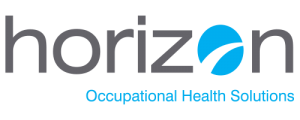![]()
It comes as no surprise that some Canadians use drugs or alcohol safely, while other misuse those same substances. What’s important to note, however, is the ways in which possible drug or alcohol abuse in your workplace might affect the health and safety of employees. For many industries, drug and alcohol abuse in the workplace can be a health and safety concern not just for the individual responsible, but also for the entire workplace.
ABOUT SUBSTANCE ABUSE
Substance abuse has been defined as “the long-term, pathological use of alcohol or drugs, characterized by daily intoxication, inability to reduce consumption, and impairment in social or occupational functioning.” It’s clear from this definition that by taking part in substance abuse, an individual would be significantly affected in both their personal and work lives.
It’s commonly known that alcohol is by far the most widely used substance by Canadians. According to the Canadian Centre on Substance Use and Addiction, there were around 77,000 hospitalizations entirely caused by alcohol in 2015– 2016, compared to 75,000 hospitalizations for heart attacks in the same year.
After alcohol, some common substances that are used amongst Canadians include marijuana, opioids, and other prescription medications. According to the Canadian Alcohol and Drug Use Monitoring Survey (CADUMS), because of the ability for marijuana to stay in the system longer, some workers are turning to cocaine or crack.
SIGNS OF ABUSE
It’s most common that the dependency of an employee on drugs or alcohol first appears as a problem in the workplace noticeable through performance or attendance issues. One strategy that’s recommended by health and safety specialists is to train people managers at your organization to recognize some of those signs of drug or alcohol abuse.
SIGNS INCLUDE:
- Changes in appearance
- Consistently missed deadlines
- Difficulty concentrating or staying mentally present on the job
- Inexplicable errors in judgment
- Increase in casual absences from work
- Extended breaks or long absences from the work station
- Consistently late arrival or early departure
- Changes in attitude or increased irritability
FINDING A SOLUTION
There are many organizational, personal and social factors that can lead an employee to choose to use a substance. In general, however, some work-related factors can include high stress, low job satisfaction, long hours or irregular shifts, fatigue, and more. It’s important that people managers speak with their staff to understand clearly the stressors of the job and/or reasons for which an employee might be suffering as a result of the job.
As the person with a clear view on the work and performance of employees, people managers and supervisors have a special role to play in the identification of substance abuse or use at work. For this reason, they should be educated clearly on how to recognize and deal with these occurrences with employees and to take the appropriate steps.
Additionally, employers and employees can collaborate to develop and implement policies around acceptable workplace behaviour and the use of substances in the workplace. By creating and communicating clear guidelines for behaviour in the workplace, the required help can be provided to all employees with a professional and consistent approach.
When it comes to substance use and abuse in the workplace, the costs to business are immense. From poor decision making and lack of efficiency all the way to the physical safety and even the threat of death, the possible consequences of substance abuse in the workplace are not to be taken lightly.
If you’d like to learn more about the ways in which Horizon Occupational Health Solutions can help your organization mitigate risk when it comes to drugs and alcohol in the workplace, contact us at marketing@horizonohs.com.
